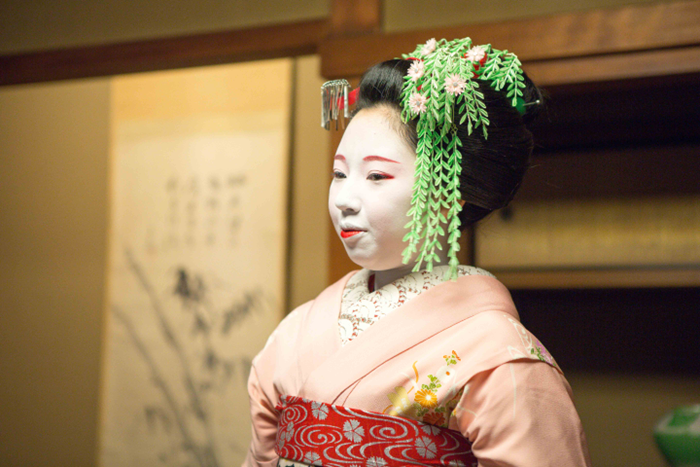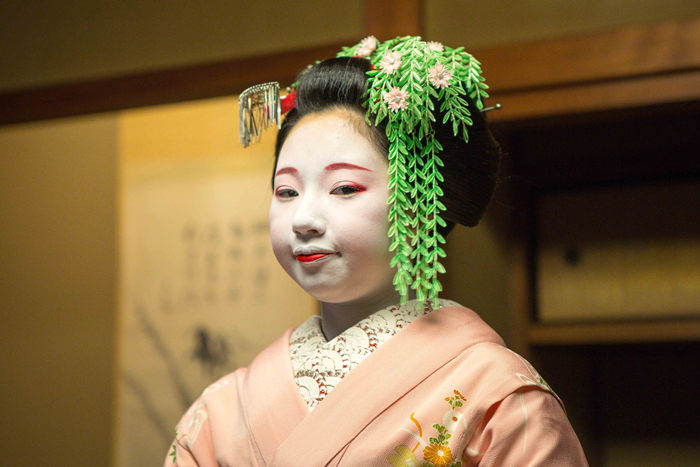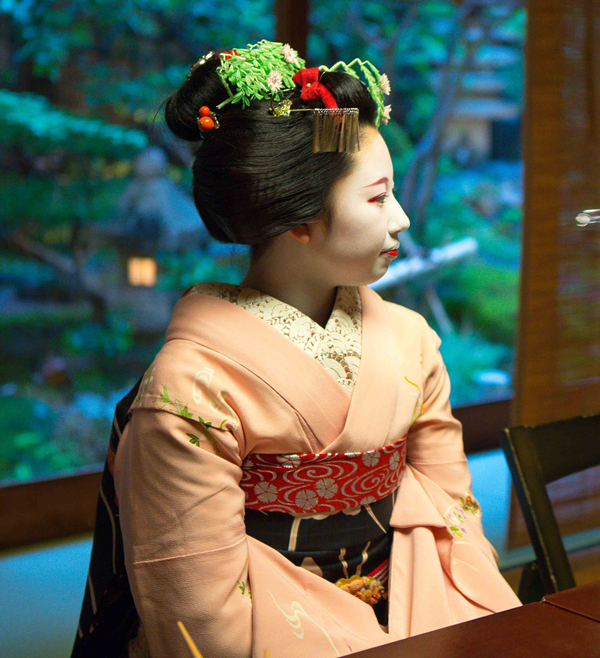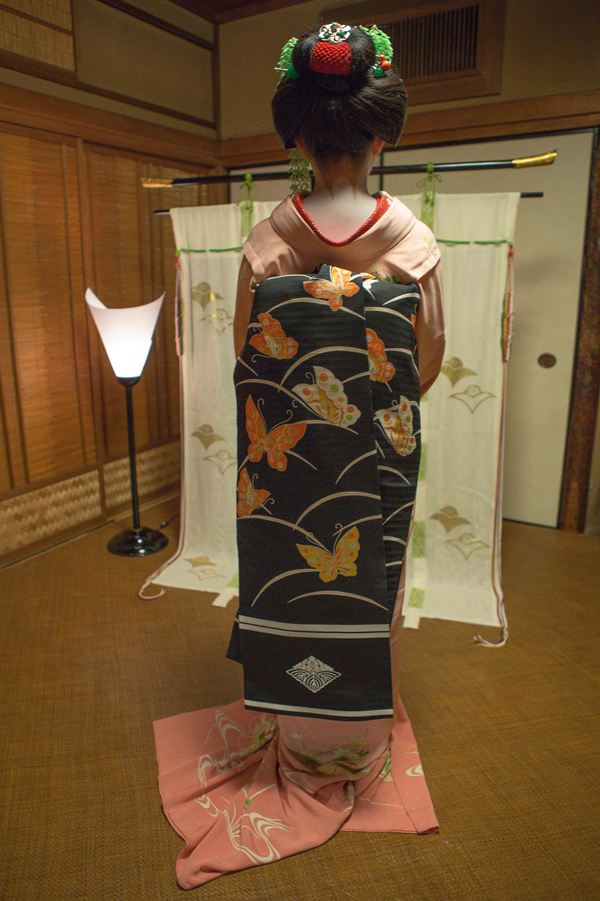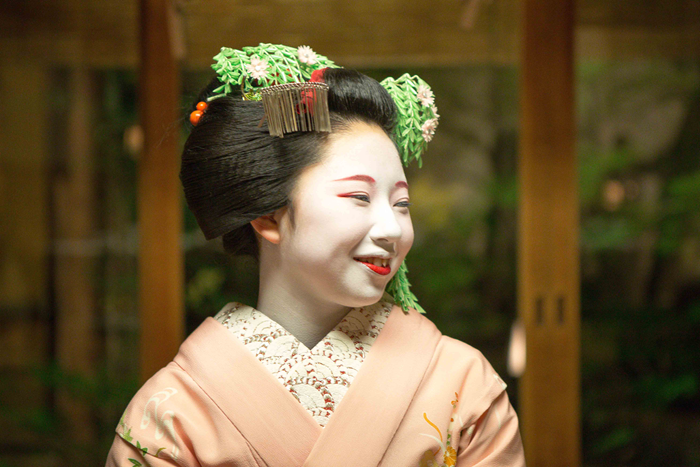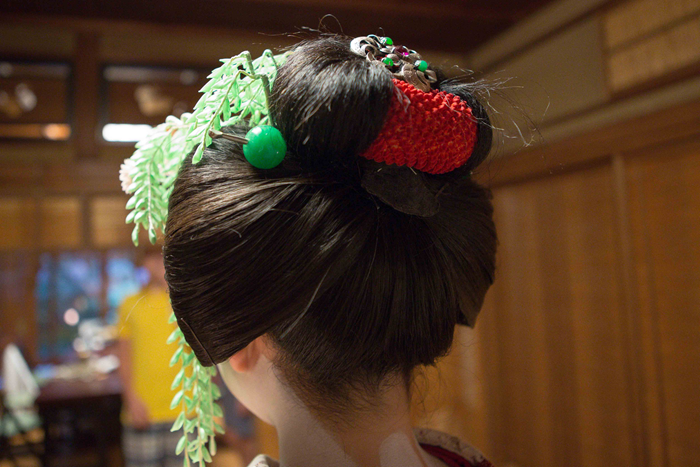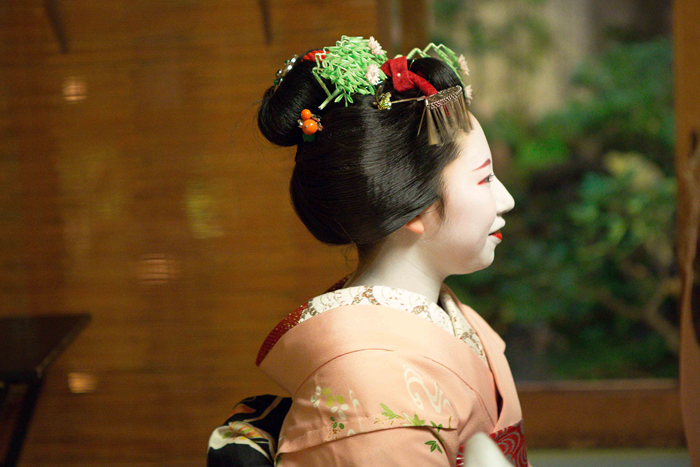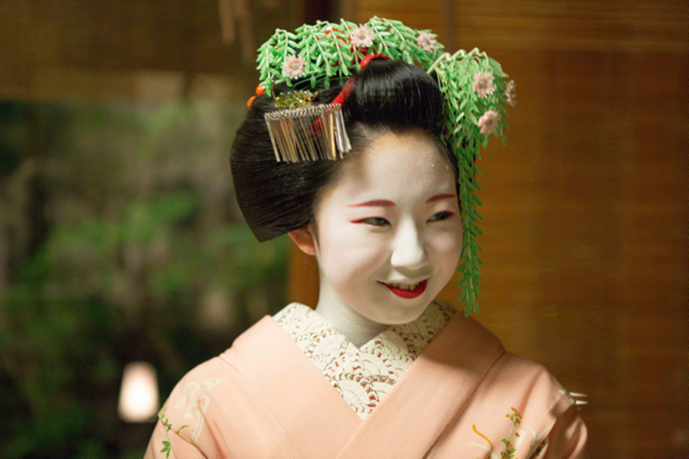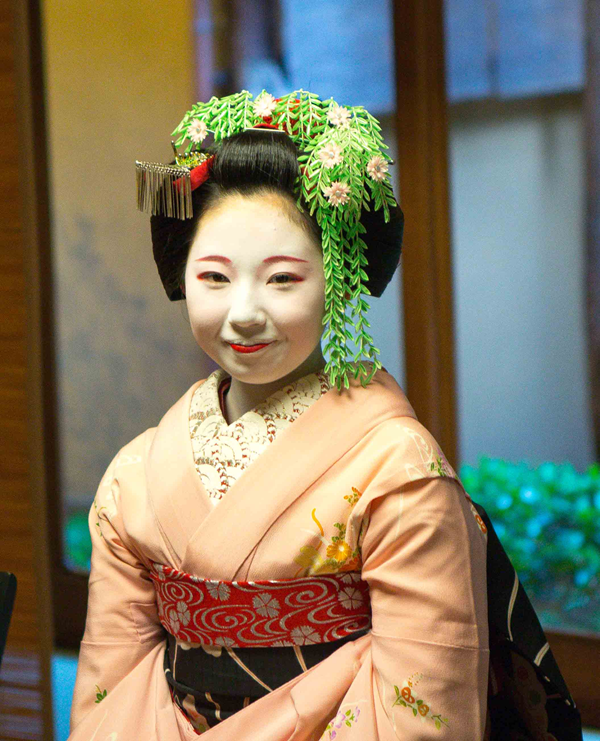As mentioned in my initial post on Kyoto, we enjoy learning the history and culture of Japan. We did not know what to expect with our dining with a maiko/geisha/geiko experience. When the maiko-san originally arrived, our interpreter quickly helped us make introductions.
She sat down with our family and the conversation began, a free flowing discussion of her life over 2 hours.
In no particular order, a few highlights from the conversation.
She is 17 and grew up in Nagoya. She chose to become a maiko after going on a school trip to Kyoto. She watched a geiko perform and decided that she wanted to join the profession.
Her upper lip is white as she is a maiko. When she becomes a geiko she will decorate both lips.
Every month she changes her hair decorations. This month I believe it is the willow.
She often entertains school groups and when asked what the funniest question she gets, she laughed and said one question always come up – does she have a boyfriend? (answer is no – not allowed to).
In her first year prior to becoming a maiko it was like an apprenticeship. She learned what the years ahead would be like, and whether she wanted to continue.
It is not an easy life. She starts the day at 10am with training in the arts. She then dresses, doing her own make-up (it takes 40 minutes) and having assistance from a man who comes to the house daily to assist with the kimono which weighs 10kg. The sash is 7m long. She then visits 20 tea houses that her house is affiliated with, and starting at 6pm does 2 hour hosting sessions until midnight. At midnight she heads home, has a hot bath and a few hours of personal time (reading, TV, music) until she heads to bed at 3am.
She is not allowed to have a cell phone.
When she contracted with her mama-san to become a maiko, she made a 5-7 year commitment until she becomes a geiko at 20-22 years. The mamma-san pays for everything (training, food, clothing, lodging) and in return takes all profits from the days work.
She lives with 8 other maiko.
She only does her hair once a week, sleeping with it made like this (which can be awkward)
Because she keeps her hair in this style all the time, she must be careful where she goes when she does have time off as people will recognize her as a maiko. (i.e. no junk food places)
She only gets 1-2 days off a month and time at New Years to go home.
When asked what do people think at home – she said that she is growing apart from her old friends. Her grandmother has never approved.
If she needs money she has to ask the mamma-san. I got the impression that was not something that was done often or lightly.
She enjoys listening to music on her Sony Walkman. She likes Avril Lavigne.
Dinners are mostly with business men, although they are starting to see women. If it is after dinner, it often involves karaoke and evenings at bars.
Tourists are always trying to take her picture. She would prefer if they asked first.
She will often take the train to Tokyo for events (entertaining events, Sumo tournaments) fully dressed.
To formally enter her maiko apprenticeship, she had a ceremony involving her performing for the mamma-san and an important client.
Many maiko do not become geiko (50/50). They decide to go back to their homes, head back to school or get jobs. In effect, starting a different education.
Will she continue on and become a geiko? She didn’t know. It is a hard life.
Fascinating.

